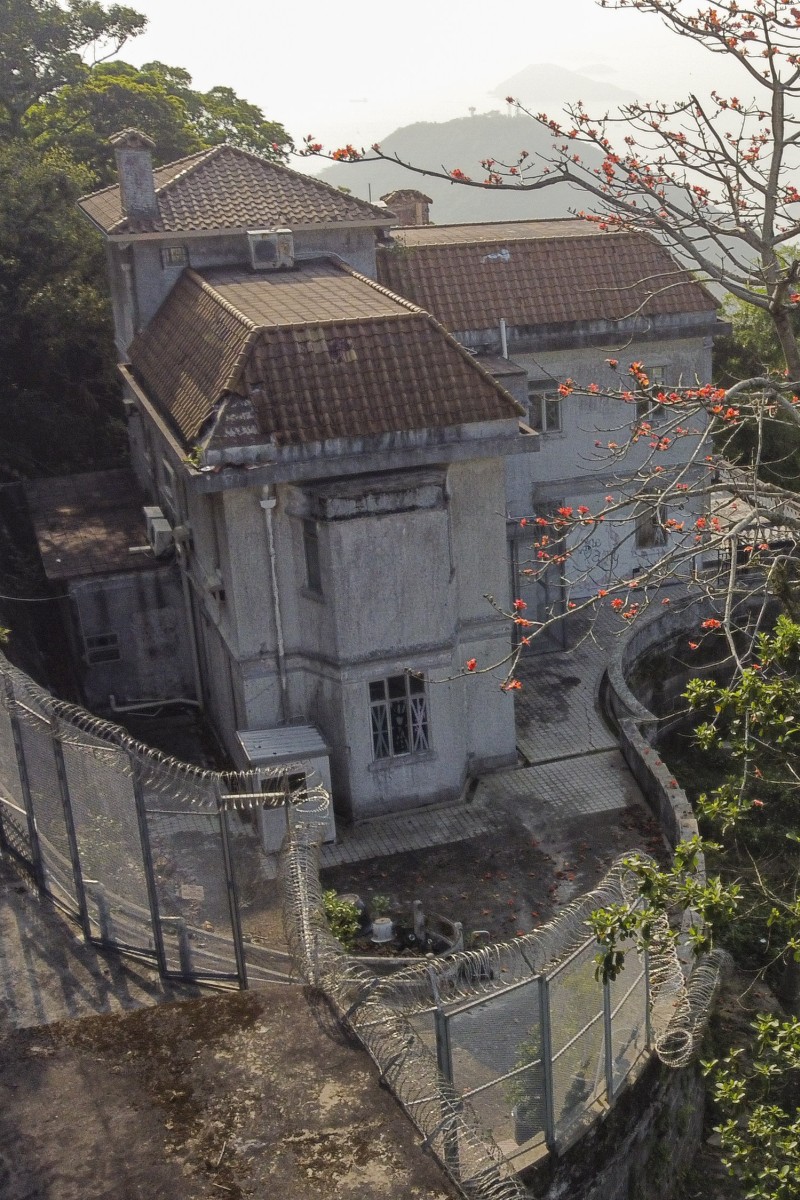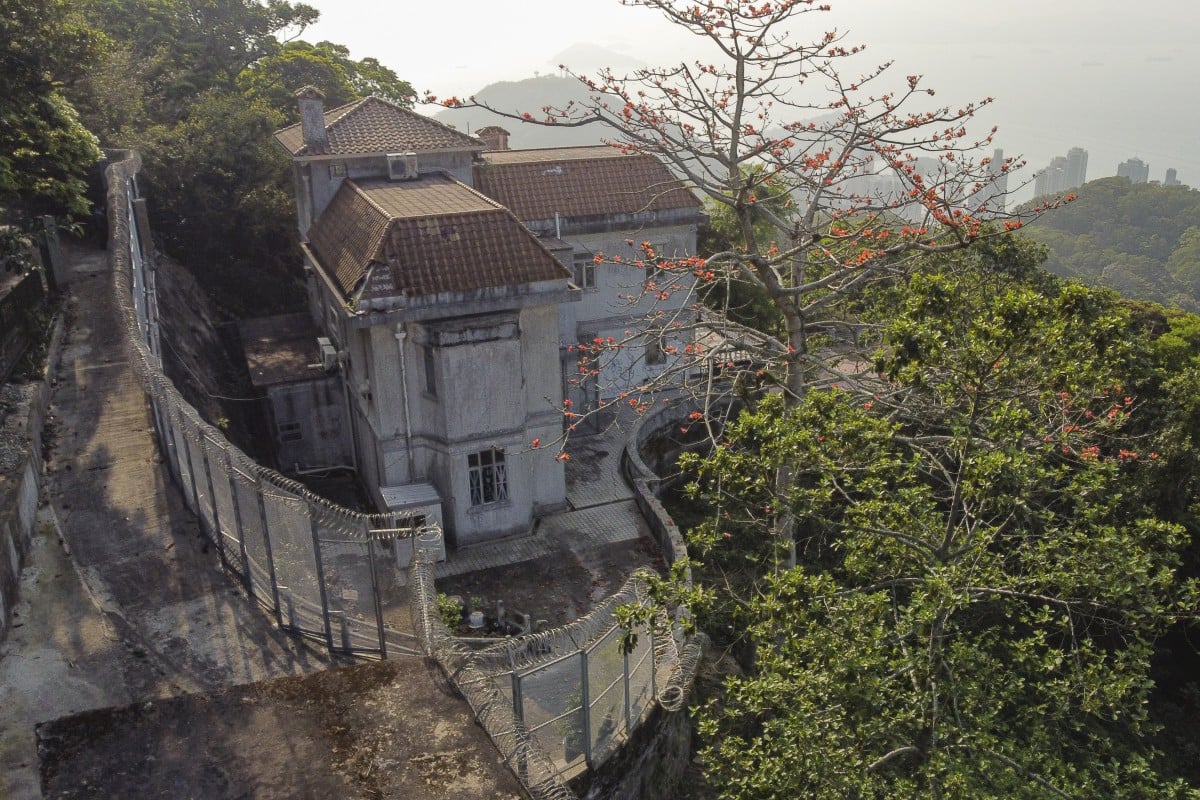
- City has many ghost stories, from the infamous Dragon Lodge on The Peak to the High Street Community Centre in Sai Ying Pun, a former mental hospital
- During Hungry Ghost, some believe the gates of hell open and spirits can visit the world of the living
 The Peak’s Dragon Lodge is rumoured to be one of the most haunted spots in Hong Kong. Photo: Martin Chan
The Peak’s Dragon Lodge is rumoured to be one of the most haunted spots in Hong Kong. Photo: Martin ChanThe Hungry Ghost Festival is an annual Chinese festival that falls on the 15th day of the seventh lunar month. This year the festival, also known as the Yu Lan Festival, falls on August 18.
Some believe the gates of hell open on this day, allowing restless spirits to access the human world. People who observe the folklore perform rituals such as burning joss paper and paper offerings and leaving out food to appease these ghosts and honour their ancestors.
In Hong Kong, stories of the supernatural have always been a part of local culture. While we should not believe these tales without thinking critically, it is still interesting to learn why some people believe these places are haunted, the colourful stories behind these locations and how they tie into local history.
10 things to avoid during the Hungry Ghost Festival, from wearing red to staying out late
Dragon Lodge, Central
Dragon Lodge is situated on The Peak, an area of Hong Kong known for its luxurious real estate, which makes its eerie history all the more surprising. The property, built sometime before World War II, has changed hands multiple times: the first owner faced bankruptcy, and another died in the house.
Rumour has it that Japanese soldiers occupied the lodge during World War II and allegedly executed Catholic nuns in its courtyard. In 2004, a redevelopment project was abandoned because construction workers claimed to have heard the cries of unseen children.
Whether these myths are true, the Dragon Lodge is a popular spot for ghost enthusiasts. It is said that the property was last sold in 2004 for HK$76 million, and the current owners have sealed off the lodge thanks to these trespassers.
Nam Koo Terrace, Wan Chai
Nam Koo Terrace, commonly known as “Wan Chai Haunted House”, was built by Shanghaiese businessman To Chun-man in 1918. The two-storey red brickwork mansion is located on Ship Street in Wan Chai.
As is typical for a ghost story, the history and mysterious vibe of the place have inspired many tales. It is said that the building was used as a military brothel during the Japanese occupation of Hong Kong, though no official reports confirm this. People have claimed to see ghostly figures at the site and even said spirits have possessed them inside the mansion.
The building has sat vacant for years, although it will allegedly be turned into a marriage registry sometime in the near future.
Hungry Ghost Festival: Hong Kong gives traditional festival modern ChatGPT twist
High Street Community Centre, Sai Ying Pun
The High Street Community Centre was constructed in 1892 and first served as a mental hospital. It was allegedly used as an execution site during the Japanese occupation, and after the war ended in 1945, the hospital resumed its previous services before closing its doors in 1971. It then sat abandoned for more than 20 years, falling into disrepair, especially after two fires.
During this time, the complex started attracting curious teenagers and drug addicts and developed its ghostly reputation. Rumours spread that the building was full of sounds of women crying, mysterious footsteps, ghostly flames, and sightings of decapitated bodies.
In 1998, the building got a new life after being renovated and transformed into the Sai Ying Pun Community Complex. It now houses several charity organisations that serve the community, but some residents are still weary of the complex.
Tsat Tsz Mui Road, North Point
Tsat Tsz Mui Road means “Seven Sisters” road in Chinese. If you head to the area in eastern North Point today, you’ll find a collection of offices and residential buildings. But despite the hustle and bustle, the road holds a mysterious past.
Seven sisters were said to have lived in the area, then a fishing village, 1,000 years ago. The sisters were very close and vowed to remain unmarried. However, their family found a husband for the third sister, who said she would kill herself to uphold the vow. Learning of her intentions, the other sisters decided to join her by jumping into the sea while holding hands.
The next day, seven boulders shaped like women appeared along the coastline. From then on, the area was known as the Seven Sisters District.
A swimming shed built in the area was thought to be haunted by the ghosts of the seven sisters. However, the shed was destroyed during the Japanese occupation.
Hungry Ghost Festival: paper offerings artist on making ‘Star Wars’ helmets and chicken wings
Tuen Mun Road, Tuen Mun
There have been hundreds of accidents on Tuen Mun Road since it opened in 1978, and some have been deadly. Some accidents have been attributed to poor road design, while other drivers reported seeing ghostly figures suddenly appear on the highway. In 2003, a bus crash tragically killed 21 people, including the driver.
Some have claimed to see spirits wandering the area, believed to be the restless souls of those who lost their lives in the accidents.
